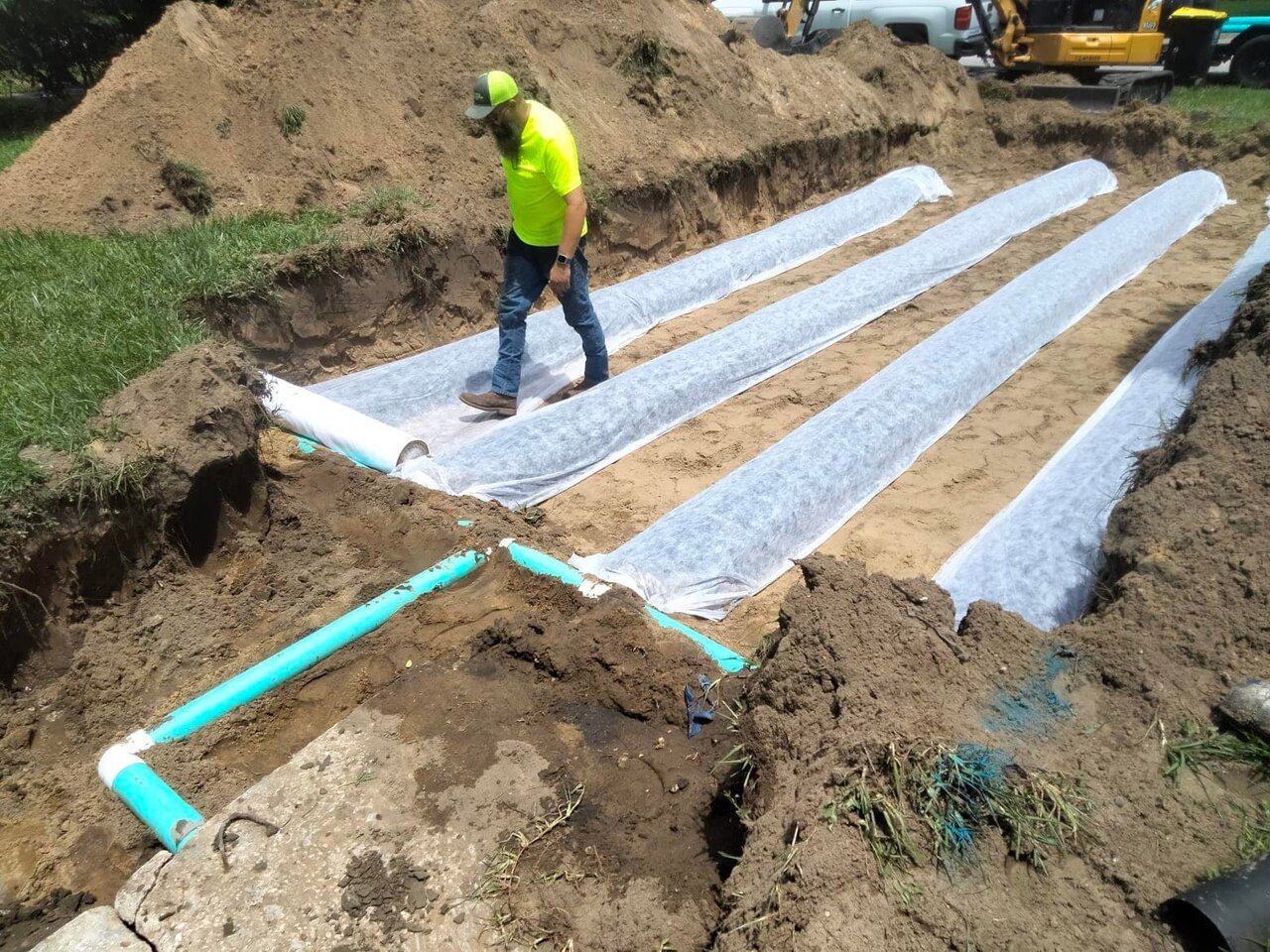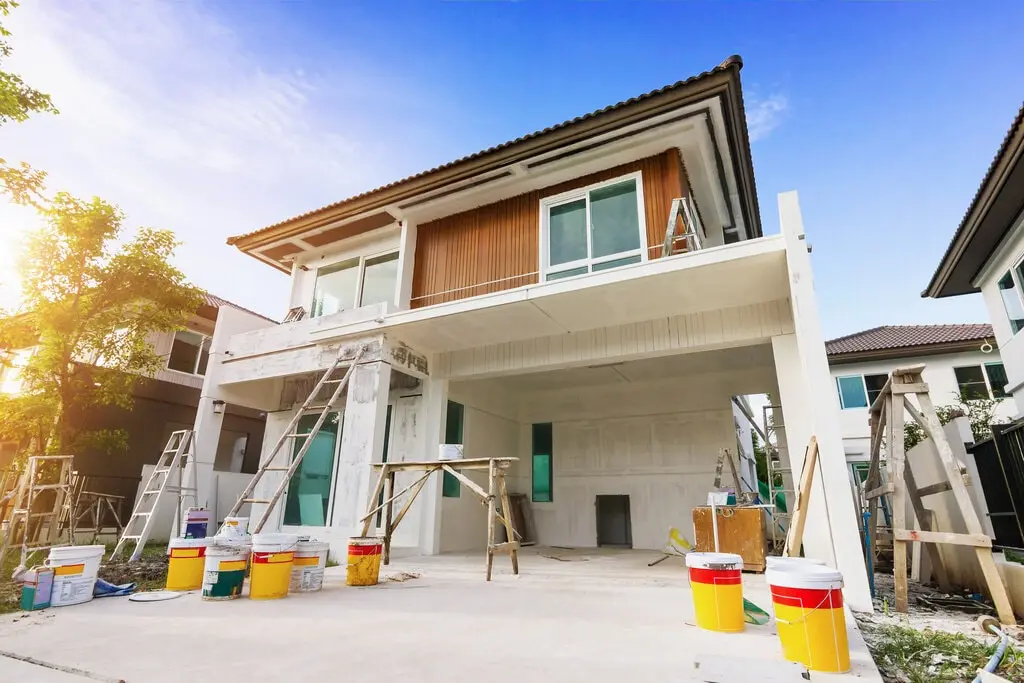Homeowners with septic systems know that there are guidelines that should be followed to ensure the proper functioning of their on-property wastewater treatment system. A few of those guidelines concern the drainfield, which is also known as the leach field.
What Is a Septic Drain Field?
A drain field is an area of land typically located adjacent to a septic tank. It consists of several trenches or pits that are filled with gravel and perforated pipes. These components work together to filter wastewater as it drains out from the septic tank, allowing it to slowly saturate into the soil while also removing harmful particles and contaminants from the water.
A well-functioning drainfield is essentially the last stop for the wastewater from your home before it reenters the environment. Problems with drain fields can include clogs or backups, leading to costly repairs. In some cases, a poorly maintained field can even cause health risks due to the overflow of wastewater into your yard and surrounding areas.
Because the processing of the wastewater requires that it percolates through the drainfield, it is important to avoid doing anything that causes the soil to become compacted. This is why septic systems owners are instructed to never park or drive on the drainfield. Structures, such as garages, sheds, or gazebos, also should not be situated on the drainfield.
Another recommendation that a septic professional will often give homeowners is to use caution about planting on or near the drainfield. That is because roots from plants (especially larger ones like trees or bushes) are attracted to the water found in the area and can quickly invade the area, leading to broken or clogged pipes.
Can You Landscape Over a Drain Field?
Homeowners consider adding landscaping over their septic drain field for many reasons. Sometimes, the drain field is located in the front of the home, and the homeowner wants to add plantings to enhance the curb appeal of the home. Other times, the drain field is the only area on the property that receives full sun, making it the best place for certain kinds of plants.
Regardless of the reason, this is not a decision to be taken lightly. Installing landscaping over a septic system requires careful planning and implementation.
While it should be done with caution, landscaping over a drain field does offer some benefits:
- Vegetation can help prevent soil erosion.
- Plantings can help remove moisture from the soil through transpiration.
If a septic system owner wants to plant over a drain field, a septic company will typically suggest a few specific types of plants that can be used – and a few that should be avoided.

Plants to Use On a Drain Field
While there are some plants that should be avoided on a drain field, some can be safely installed with the proper care and maintenance.
Grasses such as Kentucky bluegrass, perennial rye grass, fescue, or bermudagrass are suggested because they do not require excessive water, and they help keep the soil aerated. They are also ideal for areas with limited sun.
Flowers, such as daisies, yarrow, and black-eyed Susans can add color to the area without requiring too much water or maintenance.
When planting on a drain field, it is also important to choose plants that are suitable for the local climate and soil type. It is often best to consult with a landscaping professional or septic company before selecting any plants for the area.
Here are a few other considerations for planting on a drain field:
- Always wear gloves when working in the drainfield. Remember that the drainfield’s purpose is to remove any remaining contaminants from the wastewater, so you should avoid digging in the soil with bare hands.
- Do not add or remove more than a minimal amount of soil to what is already in the drain field area. The plan for the septic system was constructed very carefully, so you do not want to interfere with the process as it was designed.
- Choose plants that do not require irrigation or that need a great deal of fertilizer. Additionally, try to select plants that will not require a lot of maintenance, since you want to minimize the amount of traffic on the drain field.
- Avoid plants that will grow too dense, because that can shade the area and limit evaporation.

Plants to Avoid On a Drain Field
Since roots can cause problems in the drainfield, it is important to avoid plants that have a large and aggressive root system. Trees should be avoided altogether; however, some smaller shrubs with shallow roots may be tolerated in certain cases.
Other types of plants to avoid on the drain field include those that require frequent watering or heavy feeding with fertilizer. This includes annuals such as petunias and marigolds. Perennial plants like rhododendrons and azaleas should also be avoided since they need a lot of water to survive.
Planting vegetables over a drainfield is also not advised. There is a possibility that the soil contains contaminants that have yet to be filtered out of the effluent, and these could cause serious health problems if ingested. Additionally, vegetable gardening requires a lot of soil cultivation, fertilization, and watering, all of which are not recommended in the area of the drain field.
Summary
When landscaping over a drain field, it is important to use caution and common sense when selecting plants for the area. With the right planning, homeowners can create a beautiful landscape without compromising the integrity of their septic system.
Septic Company In & Near Lakeland
Septic and Drainfield Depot is the best place to call when you need septic service in & near Lakeland. As a licensed and fully insured drainfield contractor in the state of Florida, we can serve the septic needs of homeowners and business owners alike.
Whether it is drainfield installation or repair, septic tank services, or lift stations, our experienced septic technicians can provide what you need. We are available 24/7 to assist with septic emergencies.
Contact us today for a free septic estimate.







